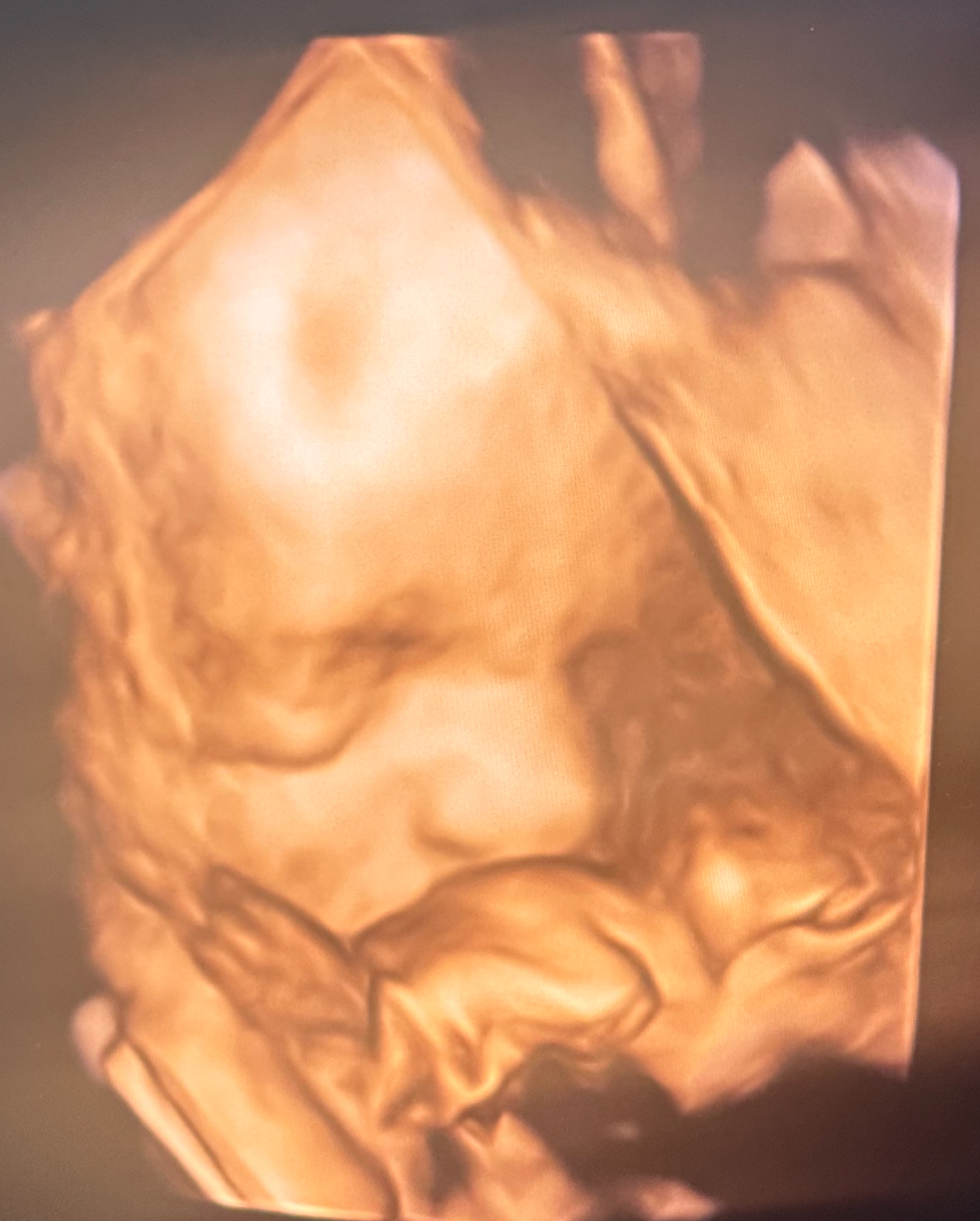Welcome to the Clockhouse
3D-4D-5D (HD Live) Scan: 18-34 weeks
The Clock House Ultrasound and Surgical Clinic Purley: Comprehensive Imaging Services
At The Clock House Ultrasound and Surgical Clinic Purley, we are committed to providing a distinctive experience for expecting parents. Our advanced imaging services include a variety of options to capture and cherish the precious moments of your baby’s development. Our comprehensive packages feature:
- All 2D/3D/4D/5D Images and Video Clips: We offer state-of-the-art ultrasound imaging, including 2D, 3D, 4D, and the latest 5D technology. All images and video clips from your scan are sent directly to your device and email. You can download, save, print in your desired format, or share your baby’s pictures and video clips with family and friends.
- Scan Report: A detailed report of your scan is provided for your records and sent directly to your device and email.
- Complimentary Baby Gender Reveal: We offer a complimentary gender reveal service, allowing you to learn and celebrate your baby’s gender in a memorable way.
- Black and White 2D and 3D Paper Images: Receive printed black and white 2D and 3D images of your baby to keep as cherished keepsakes.
At the Clock House Ultrasound and Surgical Clinic Purely We offer complementary baby gender revile services allowing you to learn and celebrate your baby’s gender in a memorable way.This includes.Receive printed black and white 2D and 3D images of your baby to keep as cherished keepsakes,free baby scan images .We also provide a free picture flower frame -hand crafted by the local Garden scent florist Florist | Garden Scents | Purley display your favorite ultrasound image and , free Heartbeat Bear which plays a recording of your baby’s heartbeat and more surprises because you and your baby are so special.If you want to celebrate the gender reveal with your family these complimentary presents will be provided to you in a discrete present box so you can open it when the time comes With all our love and care for you and your family
Our goal is to blend advanced medical technology with a personal touch, ensuring that you have a wonderful and memorable experience during this special time. At The Clock House Ultrasound and Surgical Clinic Purley, we go beyond standard care to provide exceptional services that celebrate your journey into parenthood.

How We Work
Our Work Process

About Us
3D/4D/5D (HD Live) Scan: 18-34 Weeks
The Clock House Ultrasound and Surgical Clinic Purley offers advanced 3D, 4D, and 5D (HD Live) scans to monitor your baby’s well-being and growth from 18 to 34 weeks of gestation. These scans not only provide detailed images of your unborn baby but also perform essential well-being and growth observational checks.
Purpose and Benefits:
- Well-Being and Growth Checks: The primary purpose of the 3D/4D/5D scan is to monitor your baby’s growth and development, ensuring everything is progressing smoothly.
- Enhanced Bonding: These scans help enhance the bond between you and your baby by displaying detailed images of the baby’s face, hands, feet, and other features.
Optimal Timing:
- Timing: While 3D/4D/5D scans are available after 13 weeks, they are optimally performed between 18 and 34 weeks of gestation for the best imaging results.
Procedure Details:
- Comprehensive Observations: During the scan, a fully qualified obstetric sonographer will:
- Observe the baby’s heartbeat
- Monitor fetal movements
- Assess the placental site
- Measure the amniotic fluid volume
- Document the baby’s position
- Diagnostic Evaluation: The scan provides essential diagnostic information, documented in an assessment report, which can be shared with your midwife for further care planning.
Imaging Technology:
- Advanced Imaging: We use state-of-the-art 3D/4D/5D (HD Live) imaging software to capture detailed views of your baby from various angles.
Challenges and Solutions:
- Baby’s Position: If the baby’s position makes it difficult to obtain clear images, the sonographer may suggest a short walk to induce movement.
- Complimentary Re-Scan: If clear images are still not achievable, we will offer a complimentary re-scan at a later time or date.
- Upgrade to Wellbeing and Growth Scan: If further scanning is unlikely to produce the desired imagery, we will upgrade your scan to include a Wellbeing and Growth Scan with a color Doppler assessment of fetomaternal hemodynamics.
At The Clock House Ultrasound and Surgical Clinic Purley, we strive to provide the highest quality care with our advanced imaging services, ensuring a comprehensive and reassuring experience for expectant parents.
Testimonials
What Our Patients Say About Their
Experience
Dr. Toni Barakova is the best gynecologist without a doubt. Neither in Spain nor in Bulgaria nor here in England have I met a better doctor than her. For me, she is the best!!! I have been her patient for years and I don’t trust anyone else but her. I guarantee 100% that you will not regret it! People who already know her know what I’m talking about! I will always be grateful for everything she did for us! Thank you Toni We love you.
Thank you So very much for all you have done for me. Bless you! To Dr Boykov
Dr Boykov! Can’t thank you enough! Thank you very much for your goodness and for your help!
Dear Sir Milen Boykov, Thank you so much for being so dedicated, thoughtful and compassionate surgeon that you are! You always go above and beyond and work tirelessly towards a healthy outcome. I feel so blessed to know you and you are MY surgeon! God bless you. Lots of love!
Mr Milen Boykov! To give the thanks that you deserve would take more than a day. But know that everything you do means more than words can say. With thanks never enough
Dr Toni Barakova is absolutely amazing. She is not only super supportive, but she is kind, knowledgeable, professional, respectful and definitely do the extra miles to help her patients. I simply cannot recommend her enough. I will not replace Dr Barakova with any doctor I know. The results are there and only thanks to her. I cannot recommend her enough.
Dr Barakova is an excellent doctor. Very professional and kind. She explains in a very calm way everything during and after examination. I felt very comfortable.Highly recommend.
I took my dad in to be seen by Dr Milen Boykov. After my dad had his check up, Dr Boykov advised he had abscess and needs to go for an operation asap. I took my dad to the local hospital for an operation, the local hospital discharged him without an operation which they shouldent have and said it will get better naturally. I sent the discharge letters to Dr Boykov, he immediately called me back and kindly also sent me an email saying he should of not been discharged and included a note in the email for the hospital staff to see and to get my dad back into surgery. Thanks to Dr Boykov’s assistance and advice my dad managed to get his operation done successfully and is now recovering. The Local hospital even apologised to me saying they should of not discharge him before an operation!
Dr Barakova is the best ginecologyst, I have problem nobody from NHS knew what is it, she diagnosed me, I recommend her to everyone, she is nice like a person and professional like a doctor.




